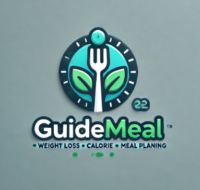The Importance of Meal Planning in Weight Loss
Meal planning serves as a vital component in the journey toward effective weight loss, primarily by fostering healthier eating habits and mitigating impulsive food choices. When individuals take the time to prepare their meals in advance, they not only become more mindful about what they are consuming but also develop a structured approach to their diet. This proactive strategy leads to increased awareness of nutritional content, which directly contributes to more balanced meals that support weight loss goals.
One of the primary benefits of meal planning is improved time management. Individuals often find that having a set plan eliminates the chaos of last-minute food decisions, which can lead to unhealthy choices. By dedicating time to outline meals for the week or month, individuals can save considerable time during busy weekdays, allowing for easier access to healthy foods when hunger strikes. Additionally, meal planning can result in significant cost savings; purchasing ingredients in bulk or planning around seasonal produce helps minimize food waste and lowers grocery bills, contributing to a more sustainable and economical approach to eating.
Statistics underscore the positive impact of meal planning on long-term weight loss success. Research indicates that individuals who engage in meal planning are more likely to adhere to their dietary regimens, achieve their weight loss targets, and maintain their progress over time. Engaging with a structured meal plan can lead to up to 50% better adherence to a dietary program. Practical tips include creating a weekly menu, focusing on portion control, and incorporating a diverse range of food groups to enhance nutritional balance. By establishing a meal pre-preparation habit, individuals can cultivate a favorable environment for achieving and maintaining weight loss effectively.
Integrating Exercise with Meal Planning for Optimal Results
In the pursuit of effective weight loss, the integration of meal planning and exercise emerges as a paramount strategy. This dual approach is essential, as nutrition and physical activity fundamentally complement each other in the quest for sustainable weight management. Meal planning involves carefully selecting food options that not only meet caloric needs but also provide the necessary nutrients to fuel the body during workouts. Conversely, a tailored exercise regimen ensures that these nutritional resources are effectively utilized, thereby enhancing fat loss while preserving lean muscle mass.
Creating a balanced fitness routine is crucial for aligning dietary goals with exercise objectives. Ideally, individuals should aim to include a mix of cardiovascular, strength, and flexibility training in their weekly routines. For those new to exercise, brisk walking, cycling, or swimming can serve as effective cardiovascular activities, promoting heart health while aiding caloric expenditure. Similarly, strength training exercises, such as lifting weights or using resistance bands, can help to build muscle, which in turn increases the metabolic rate, facilitating greater weight loss. Finally, incorporating flexibility exercises like yoga can improve overall wellness and reduce the risk of injury.
Motivation plays a significant role in maintaining consistency in both meal planning and exercise. Setting realistic, achievable goals, tracking progress, and celebrating small victories can bolster determination. Various resources are available on platforms like guidemeal.com that can assist users in this journey. Meal planning guides, which provide structured eating plans, alongside exercise tracking tools that monitor workouts, create a cohesive framework for effective weight management. By synergizing nutrition with physical activity, individuals can expect more substantial and sustainable weight loss results.

